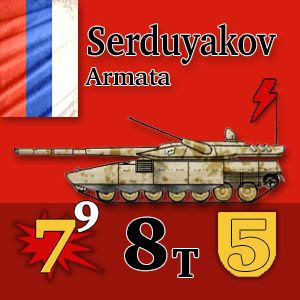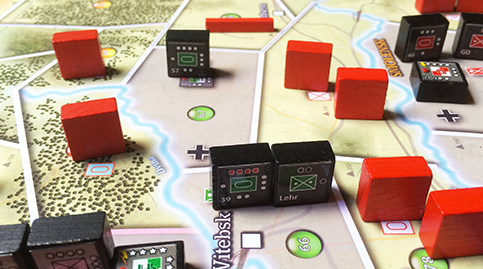Mark Walker\Crowbar Interview Transcript

Interview of Mark Walker.
Now onto the transcript…
Hello Mark, please don’t panic. Let me quickly explain. We tried, oh we tried to do this the proper way Mark. We really did. Not only did we send you an email requesting an interview we also messaged you on that facethingymajig. We waited, yes, we waited three days!! Nothing. So this was our last resort Mark. So now, all you have to do is answer a few little questions and we will put you right back where we, er, picked you up from. OK.What’s that..oh sorry (background..”he still has tape on his mouth, take it off you cretin….”). Painful tearing sound. Sorry about that, now OK to start? One thing, just ignore the wires. You’re connected to ACME 1555 1\3 lie detector, just so you know. OK here we go.
Name?
Uh? Mark (base line stick with it)
Age?
As young as I feel on any given day. In general, my wife claims that I’m a large nine-year old.
Current Location?
South-central Virginia.
Favourite TV program?
Castle Rock
Favourite Music genre?
Alternative Rock
Favourite band\musician?
Plimsouls
Favourite Film?
Sucker Punch
Favourite period of history?
Tomorrow
Favourite Superhero?
Forever Carlyle
Favourite colour?
Blue over tan, like the beach.
Favourite animal?
Dog
Lucky number?
8
Hurricane or BF109?
P-51 Mustang. (clever)
WW2 or Vietnam?
WW3 (like it, leftfield)
Werewolf or Vampire?
Katarina (interesting)
Tactical or Operational?
Tactical (me too)
Patton or McArthur?
Patton
Excellent! That’s the levels sorted, sorry I mean the, we know you better, part done.
When did you first get involved with wargames and at what point did you decide to make a career out of it?
First game I played was TAHGC’s Gettysburg when I was 9. Decided to make a career of it in 2006 when I opened LNLP.
How difficult was it to get off the mark with your first product? Trying to get this website out there to the communities that would be interested has been the hardest part by far with regards to AWNT. I imagine trying to make a living out of your venture adds the pressure ten fold with regards to getting your name out there.
It was difficult. I remember the first screen shot I posted of a village in Forgotten Heroes. It was on Consimworld. Some smart ass said, “Where’s the cocktail waitress.”
What was your first successful game design?
I’m not sure any of my designs have been successful. My first published designed was Lock ‘n Load.
Looking back at your game releases what if any are your standout games? Not necessarily from a profit viewpoint but more from a personal view and why is that?
Dark War RPG, because it’s my first RPG and the game everyone wants to play when they come over to my house. Of course, Lock ‘n Load was a lot of fun too. Strange thing about that game was that it worked right away. Some games, like ’65, take quite a while to make click. I like ’65 and Night of Man because of the way they play. The card-driven mechanism makes them feel bigger, richer than a typical tactical game. And World at War? Geez but I love me some WW3 gaming.
Your games go from historical through to WW3 horror and lots in between! Do you have a favourite with regards to the design process?
Not sure I understand this question, but… if you mean a favourite era/genre, it would be military horror. Like Dog Soldiers. (great film)
What scale is your favourite to design for? I’d love to see man vs man scale, does that scale ring your bell so to speak?
Well, Dark War is man vs man/woman/beast/demon. I guess that squad-level is my favorite scale, but platoon-level is a close second.
What’s your thoughts on Solo games? Many struggle with regards to finding an opponent so solo wargames suit them. Have you thought about designing solo only boardgames?
Although I didn’t design it, we have an excellent solo wargame, Crowbar! The Rangers at Pointe du Hoc, on Kickstarter right now. I like solo wargames, or I guess that I mean that I like the idea of solo wargames, but I find it difficult to find time to solo game. It’s when I get together with friends that I make myself sit down and game.
When did you first come across Herm Luttman and the Crowbar! Tabletop game?
I’ve known Herm for a few years. He suggested Crowbar! To me and I said, not yes, but hell yes. If Herm designed a game about dog poop, I’d publish it. Fortunately, Crowbar! Isn’t about dog poop, it’s an immersive game about the Ranger’s assault on Pointe du Hoc. It’s a push-your-luck type game. The longer and harder you push your luck, the greater the chance for a big fall.
The KickStarter has done extremely well. How pleased are you and Herm about how successful it’s been?
Very pleased and I think there is a good chance to unlock more stretch goals as we approach the finish. It’s exciting stuff.
As mentioned earlier I have an interest in Solo wargames and for me there is always room for solo tactical wargame. What was it about Crowbar! That grabbed your attention? Did the Solo aspect have any say?
I love the way that Herm puts story into his games. I had played In Magnificent Style and I loved the game.
Will we see expansions or new standalone releases? If so I do hope we get to play as the Germans..pref in Stalingrad pretty please?
Sure, there are expansions included in the Kickstarter, and yes you get to play as the Germans. 😊 (colour me excited!)
DO you have any tactical advice for the future players of Crowbar?
Don’t push your luck too far! 😊
Finally it’s been a pleasure speaking with you, Just sit tight I’m sure the good men about to burst in are now expert at untying people strapped to a chair..(loud smash) been tickety bo..must dash..bye…(sounds of footsteps and cursing fades into distance. Possibly Marks voice thanking someone and something about unhinged and need treatment..tape ends)
Crowbar the tabletop game has just had a very successful Kickstarter. I highly recommend you go check it out. Mark hasn't let us down yet, and he hasn't dropped the ball on this one either!
Good luck to Herm and Mark!
Coming soon Herm Luttmans interrogation!

































Follow Us